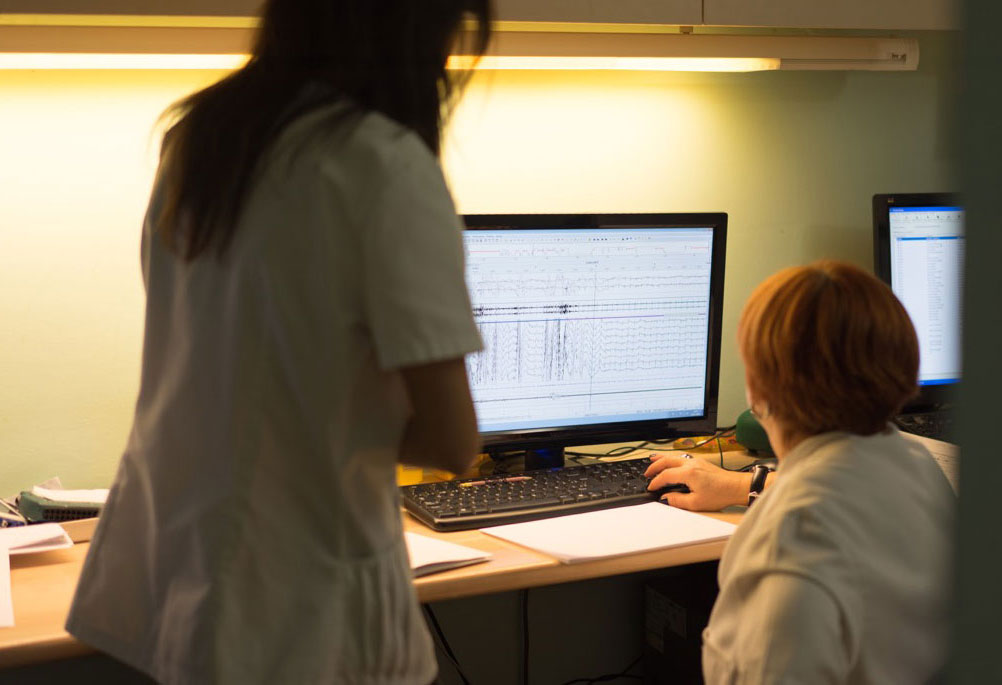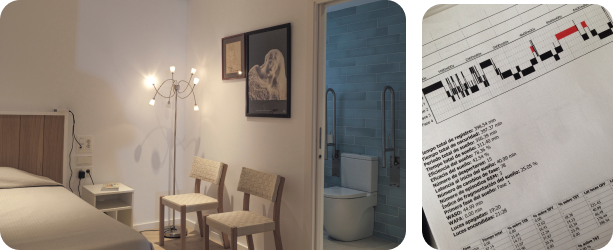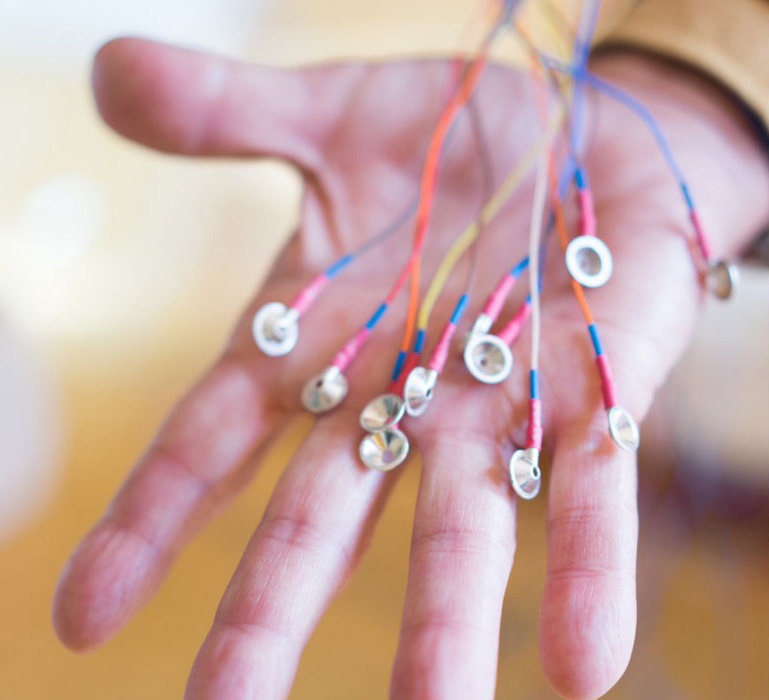Overnight sleep study in the clinic or at the patient’s home
Diagnostic tests for the treatment of sleep disorders
It is a neurophysiological technique that consists of the observation of the patient’s sleep during the night. Electrodes are placed on your head and body, which record your brain activity, breathing, snoring, heart rate and body movements.
These are connected, through a small input box, to the polygraph, a device where everything that happens during the night is recorded by means of graphs that are saved on an optical disk in the computer. The next day, the medical team interprets the results and makes the appropriate diagnosis.
This test is completely innocuous and does not prevent normal sleep, since it is performed in hotel-type rooms with their own bathroom.
A nurse supervises the study throughout the night and attends to the needs of the people we study.


At the clinic
The patient is admitted to the clinic for the study. You will sleep in a single room with bathroom.
A specialized nurse will place the small electrodes that will pick up your brain activity, breathing, snoring, heart rate and body movements.
Throughout the night, the nurse will control through computer monitors, the correct acquisition of everything that happens when we sleep. The person will be continuously accompanied in case he/she needs any attention, for example, the need to go to the bathroom.
Ambulatory
Currently, depending on the pathology or clinical decision, this test can be performed in the following ways outpatient basis, i.e., at the patient’s home. It is very useful in cases of insomnia and in children. The advantage is that the patient can continue in his natural habitat, using his bed and following his routines.
On the night of the study, you must go to the unit to have the electrodes mounted. Once at home, and following his usual routines, he switches on the device when he goes to bed. The various sensors do not disturb the patient at all and he or she can rest naturally. The next day, the same patient removes the sensors placed the night before and returns to the Clinica del Sueño, the laptop computer where all the studied data have been recorded.
The medical team studies the results and issues a diagnosis.

When is it necessary to perform a sleep study?
When there is a suspicion of a sleep-related disorder, it is necessary and essential to perform a sleep study or polysomnography. This indication is justified in the following pathologies:
Insomnia (difficulty initiating sleep, sleep splitting or early awakening) due to suspicion of:
- Respiratory problems (apneas).
- Anxiety.
- Periodic leg movements (nocturnal myoclonus).
- Some cases of depression.
- Psychological alterations.
- Restless legs syndrome.
- Delayed Sleep Phase Syndrome
Excessive daytime sleepiness (hypersomnias) due to:
- Sleep Apnea Syndrome.
- Narcolepsy.
- Other hypersomnias.
Parasomnias (abnormal phenomena that occur during sleep)
- Sleepwalking, night terrors or behavioral disorders during the night, which can be confused with epileptic seizures.
- Nocturnal seizures.
- Suspicion of irritative alterations in the EEG of epileptics, which are not evident during wakefulness.
